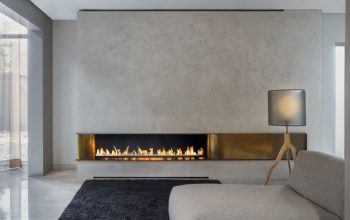Artwork Selection for Dining Rooms

Wall decor for dining room – Selecting the right artwork for your dining room is crucial; it sets the tone for conversations, family gatherings, and memorable meals. The right pieces can elevate the space from merely functional to truly inviting and stylish. Consider the artwork not just as decoration, but as a key element in creating the desired ambiance and reflecting your personal style.
Think of it as the finishing touch that perfectly complements your furniture and overall design aesthetic.
Artwork size and placement significantly impact a dining room’s ambiance. Oversized pieces can create a dramatic focal point, while smaller, clustered works offer a more intimate and collected feel. Placement, too, plays a critical role. Artwork hung too high or too low can disrupt the visual flow and detract from the overall aesthetic. Consider the scale of the artwork relative to the size of the dining table and surrounding furniture.
A piece that’s too small will get lost, while one that’s too large can overwhelm the space. Strategic placement can draw the eye, create visual interest, and ultimately enhance the dining experience.
The Principles of Visual Balance in Dining Room Artwork Arrangements
Visual balance in artwork arrangement is about creating a sense of harmony and equilibrium. It’s about distributing visual weight evenly across the space, preventing any single element from dominating or feeling out of place. This can be achieved through symmetry, asymmetry, or radial balance. Symmetrical arrangements are formal and balanced, often featuring mirrored elements on either side of a central point.
Asymmetrical arrangements, on the other hand, use different elements of varying sizes and weights to achieve balance, often creating a more dynamic and less formal feel. Radial balance emanates from a central point, creating a sense of order and focus. In a dining room, achieving visual balance ensures that the artwork complements the room’s design and doesn’t disrupt the flow of conversation or the overall dining experience.
Consider the weight of the artwork—a dark, heavily framed piece will visually weigh more than a light, delicate watercolor.
Three Dining Room Artwork Arrangement Designs, Wall decor for dining room
Below are three distinct artwork arrangement examples, each designed to evoke a different mood and style.
- Arrangement 1: Modern Minimalism. This arrangement features a single, large-scale abstract painting (approximately 48″ x 72″) above the dining table. The painting is in muted tones of gray and beige, with subtle texture. The artwork’s clean lines and neutral color palette create a sense of calm and sophistication, perfect for a modern dining space. The mood is serene and understated elegance.
- Arrangement 2: Rustic Charm. This arrangement incorporates a gallery wall of smaller framed prints and photographs (approximately 12″ x 16″ each). The frames are a mix of natural wood and black, and the artwork includes landscapes, botanical illustrations, and vintage travel posters. This eclectic mix creates a warm and inviting atmosphere, ideal for a rustic or farmhouse-style dining room. The mood is cozy and inviting, reflecting a sense of history and personal narrative.
So, you’re thinking about spicing up your dining room walls? Maybe a gallery wall, or some funky prints? But hold up, have you seen the amazing seasonal vibes you can get with some outdoor fall decor? Check out these killer ideas for your porch outdoor fall decor for porch , it might even inspire your dining room wall art – think autumnal colors and textures translated indoors!
- Arrangement 3: Bold & Dramatic. This arrangement showcases a triptych of vibrant, large-scale canvases (each approximately 36″ x 48″). The paintings feature bold colors and abstract forms, creating a visually striking focal point above the dining table. This arrangement is ideal for a dining room that demands attention and personality. The mood is energetic and sophisticated, making a statement without being overwhelming.
Lighting and its Interaction with Wall Decor: Wall Decor For Dining Room

Strategic lighting isn’t just about illuminating a space; it’s about transforming it. In a dining room, where ambiance and visual appeal are paramount, the interplay between lighting and wall decor is crucial for creating a truly memorable experience. Proper lighting can elevate even the simplest artwork, while poor lighting can diminish the impact of the most expensive pieces.
Understanding this dynamic is key to achieving a sophisticated and inviting atmosphere.Lighting dramatically impacts how we perceive color and texture in wall decor. The intensity, color temperature, and direction of light all play a role. A warm, yellowish light can create a cozy and intimate feeling, enhancing the richness of deep colors and textures like velvet or wood.
Conversely, cool, bluish light can feel more modern and crisp, highlighting lighter colors and smoother surfaces. The angle of the light also matters; a light source directly overhead can cast harsh shadows, while strategically placed lights can accentuate details and create depth.
Sconces, Chandeliers, and Recessed Lighting: Highlighting Wall Decor
Different lighting options offer unique opportunities to highlight wall decor. Chandeliers, for example, provide a dramatic focal point, often drawing the eye upward and illuminating a large area. Their placement above a dining table naturally highlights artwork or decorative plates displayed on the adjacent walls. However, the intensity and style of the chandelier must be carefully chosen to avoid overwhelming the decor.
A large, ornate chandelier might be perfect for a grand, traditional space, but it would feel out of place in a minimalist setting. In contrast, sconces offer a more subtle and focused illumination. Strategically placed flanking a piece of art, sconces can dramatically enhance its visual impact by creating a warm glow and minimizing shadows. Recessed lighting, while less dramatic, provides even illumination, preventing harsh shadows and ensuring the entire wall is evenly lit, making it ideal for showcasing large murals or collections of smaller pieces.
The key is to consider the scale and style of the decor when choosing the lighting fixture.
Lighting’s Influence on Color and Texture Perception
The color temperature of your lighting significantly affects the perceived color of your wall decor. Warm-toned lighting (around 2700K) enhances warm colors like reds, oranges, and yellows, making them appear richer and more vibrant. Conversely, cool-toned lighting (around 5000K) makes cool colors like blues, greens, and purples appear more saturated. Consider this when choosing your lighting: if your wall decor features predominantly warm tones, opt for warm-toned lighting; if it features cool tones, choose cool-toned lighting.
Similarly, the intensity of the light affects the perception of texture. Dimmer lighting can soften textures, creating a more romantic and intimate atmosphere. Brighter lighting, on the other hand, reveals more details and highlights the texture of the artwork or wall covering.
Designing a Lighting Scheme for a Specific Dining Room Theme
Let’s imagine a dining room with a modern minimalist theme featuring sleek, black-and-white artwork with geometric patterns. To complement this aesthetic, a recessed lighting system with adjustable color temperature would be ideal. This allows for flexibility, shifting between warm and cool tones depending on the desired ambiance. We can incorporate several recessed lights evenly spaced across the ceiling to provide even illumination across the walls, ensuring the artwork is clearly visible without harsh shadows.
Additionally, a single, sleek pendant light above the dining table, with a cool-toned white light, would serve as a stylish focal point, subtly highlighting the artwork and creating a sophisticated atmosphere. The intensity of both the recessed and pendant lighting should be adjustable to control the overall brightness and mood of the room. This adaptable scheme ensures the lighting always perfectly complements the minimalist decor, enhancing its clean lines and bold contrasts.
Clarifying Questions
What size mirror is best for a small dining room?
A smaller, strategically placed mirror can work wonders in a small dining room. Avoid overly large mirrors which can overwhelm the space. A vertically oriented mirror can make the ceiling appear higher.
How do I choose artwork that complements my existing furniture?
Consider the colors and styles already present in your dining room. Choose artwork with complementary colors or a similar style to create a cohesive look. Alternatively, a contrasting piece can add visual interest.
What are some low-cost wall decor options?
Creating a gallery wall with framed prints or family photos is budget-friendly. Repurposing items like old plates or creating a textured wall using affordable materials are also great cost-effective solutions.
How do I hang a heavy piece of art securely?
Use heavy-duty picture hanging hardware appropriate for the weight of the artwork and the type of wall. Consider using multiple hanging points for extra security.












